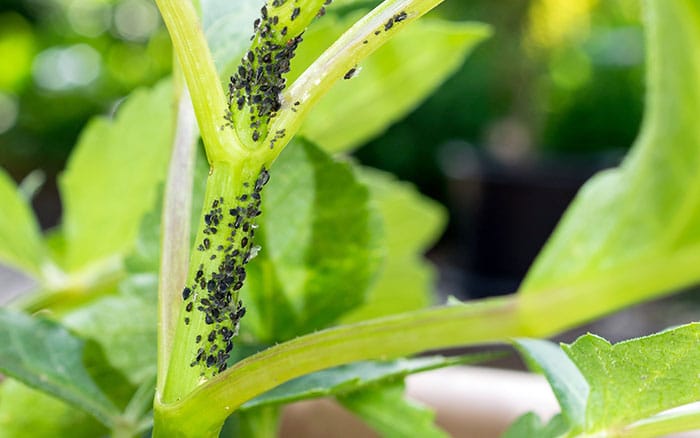There are over 500 different species of aphids in Britain, ranging in size from one to seven millimetres. There are several different colours, green, black, pink, white, yellow, or mottled. Find out how to protect your plants with this pest and disease guide to aphids.
What are aphids?
Aphids are sap-suckers as that’s literally what they do – suck the sap out of plant stems.
They will feed on fruit, vegetable and ornamental plants growing both outside and under cover. The most commonly seen aphids are green, white, and black.
The young and adults both feed almost continuously. They eject surplus sugars and water sucked from the plant which becomes a sticky substance known as honeydew. Some ant colonies have wised up to this free sweet treat and can be seen on plant stems ‘farming’ the pests in order to feed on the honeydew.
In extreme cases, the constant feeding of the aphids on plant tissue can weaken the plant. This can negatively affect its growth, plus some can spread viruses from one plant to another.

How to spot them
Aphid colonies can normally be spotted gathering on flower buds, tips of the plants shoots and the underside of leaves.
Another tell-tale sign of aphids is white outer casings left on the leaves as the aphid sheds its old coat. There can also be evidence of the sticky honeydew substance which in turn attracts a fungus called ‘sooty mould’ leaving black deposits on and around the honeydew deposits.
Ants climbing up and down plant stems is often an indication of a nearby colonies.

How to control aphids
It’s important to remember that aphids are an important part of the wildlife food chain. As such, they’re not always a bad thing to have on and around plants. This is because, a little later in the season, they will be food for beneficial predators such as ladybirds.
Other natural predators are parasitic wasps, lacewing and hoverfly larvae which can be bought online as a form of biological control.
It’s sometimes possible to squash colonies using your finger and thumb.
There are some organic sprays available. Choose ones that have an oil or fatty acid base because these are less likely to adversely affect larger beneficial predators like ladybirds.


Leave A Comment